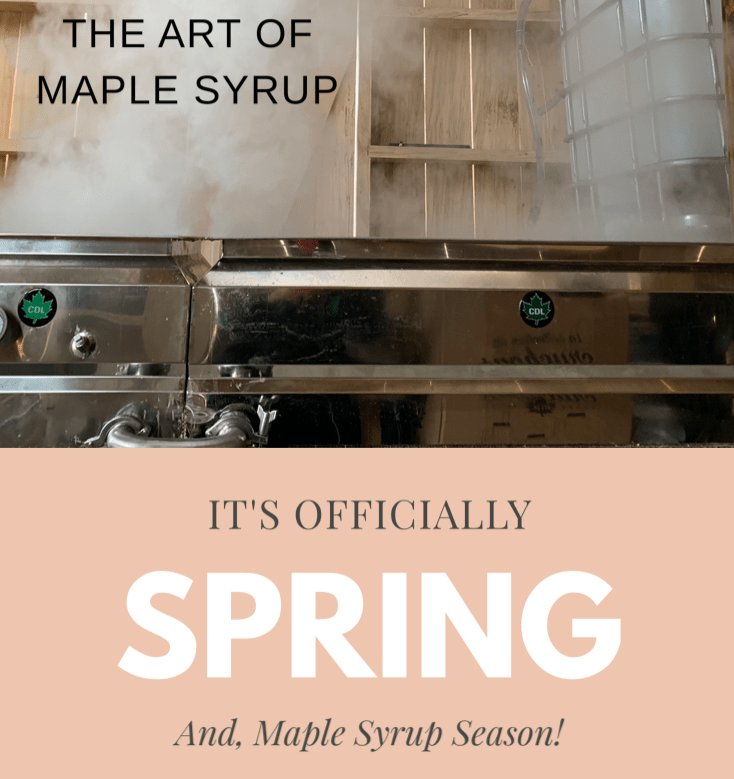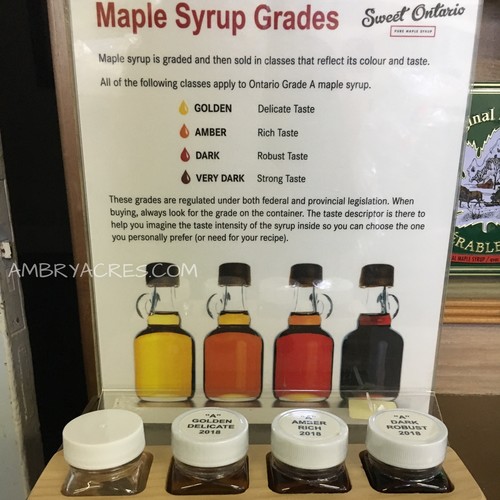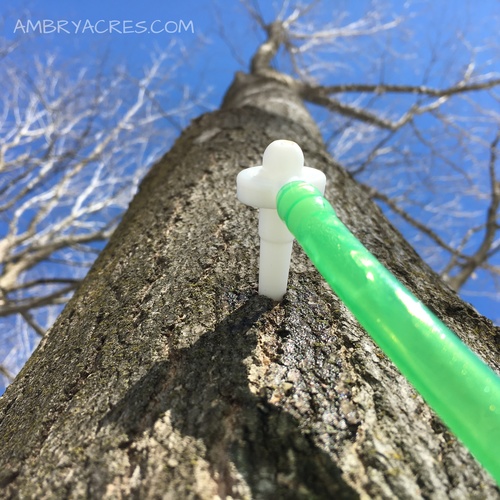Boiling Maple Sap over high heat is a step performed to make Maple Syrup.
There needs to be a minimum amount of Maple Sap collected. Maple Sap runs out of the Maple Tree. Each day, we test the sap to determine it’s sugar content. The result will impact the ratio of sap needed to concentrate into maple syrup. General rule of thumb is 40 litres of sap at about 2% sugar content will produce 1 litre of Maple Syrup. So, it’s imperative to have plenty of sap available and ready for boiling. Boiling Maple Sap until it becomes concentrated into Maple Syrup occurs once the sugar content has reached 66%.
To determine the sugar content of the syrup, we check for thickness by performing an Apron Test. Subsequently, we take readings using a refractometer. Plus, we use a hydrometer to ensure it’s just right!
Steps Involved
Often the temperature at which sap becomes syrup is 7.1 degrees Fahrenheit above the boiling point of water which is around 219 degrees. The temperature will alter slighlty and sometimes during long boiling days, we make the required modifications. The weather, pressure systems and wind can result in impacting the exact temperature. For this reason, it’s important to calibrate the thermometer before boiling maple sap every time.
We constantly check the syrup with a refractometer to make sure we draw-off at the right temperature. When the thermometer in the pan reaches 219 degrees; the syrup is ready. Lastly, comes a few additional steps to complete including filtered, adjusted for density, graded for flavor and color and bottled.
Watch our video on Boiling Maple Sap.
Get a feel for what it’s like to be inside the Sugar Shack. Learn The Art of Maple Syrup!







My dad and brother make sap every year. It’s so much better than the garbage they sell at the store! A good thing to have around for sure.
Hi Santana! Thanks so much for sharing your comment today. I recently found myself in a conversation discussing this very topic. My input to that conversation pertaining to comparing farm fresh 100% pure maple syrup to anything other available in the store was this question. Ya, it may be less expensive but what is it? Have you read the label? What’s in it? Is it even food? And personally, we prefer to simply eat all-natural food. Additionally, we like to know what’s in our food, where it is produced and how it’s produced. We are so very fortunate to have the ability to produce most of our food, especially now that food is becoming difficult to access due to the current situation of COVID-19. Thanks for dropping by!